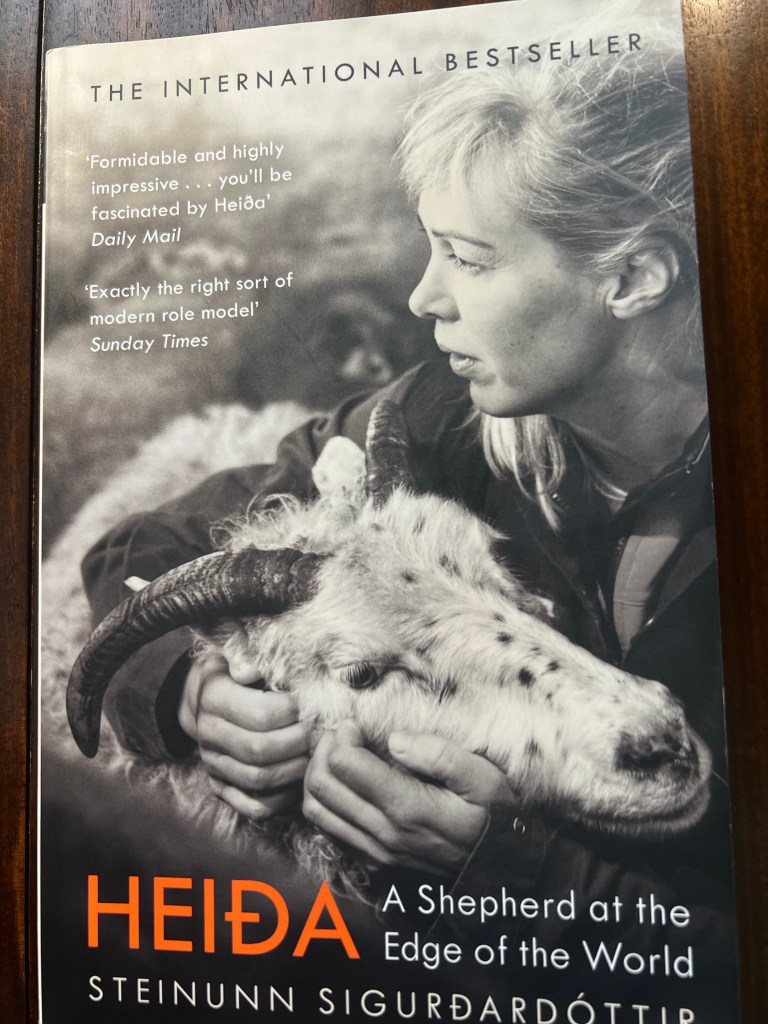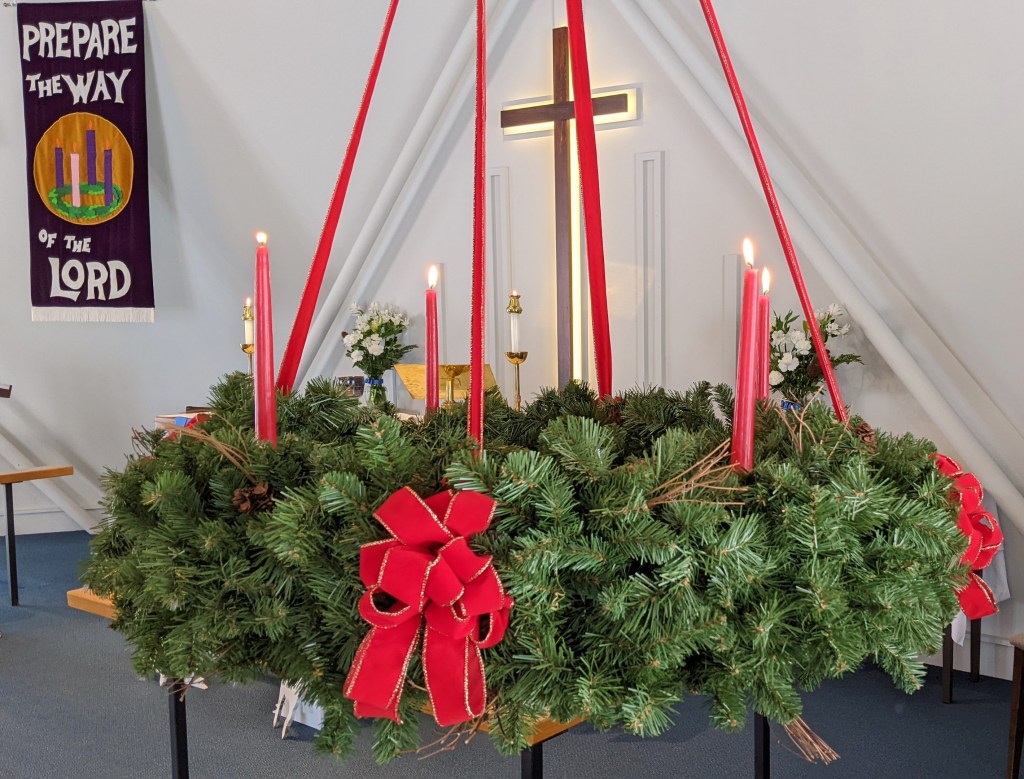“They set out. And there, ahead of them, went the star that they had seen in the East, until it stopped over the place where the child was.”[1]
Ready for a year-end quiz? During this sermon a couple of pictures will appear on the screen. One is of a home near my place lighted up for Christmas. The other is of a star-filled sky with one that shines a little bit brighter than the rest—can you spot it?
Now, the question I have for you is this: Which one of the two photos reflects the way you have celebrated the Christmas holidays this year? The way you would have liked to, perhaps? Maybe a bit of both, ok. But which one, if you had to choose, claimed more of your heart and mind? Be honest.

The first may reflect our wonderful excitement and joy of the season: the coloured and blinking bulbs shouting the triumph of light. And maybe the lights represent a bit of pushback, emotionally, against the long nights at this time of year in the northern hemisphere. I think many of us can relate and lend our hands to congratulate our neighbours’ effort at brightening our lives.

What about the photo of the star lit sky—pinpricks of light against a canvas of predominantly dark space in the universe? And if you spend a bit of time contemplating the sky on a clear night, you might land on one star, that shines particularly bright—brighter than the others. Did you catch the one in the photo?
Which moves your heart more? Which presentation of light directs your heart?
The Magi came from the East, following the star “in the East”. This direction is significant and mentioned twice in the Gospel for today.[2] Not only was it to signify that the first visitors to the revealed Son of God were outsiders, foreigners, from Asia. That’s a sermon on its own.
But today, as the Christmas season carries on through the New Year and the Epiphany, I would like us to consider first why the ‘East’ is so important to the telling of Christ’s birth and his revelation as God’s Son.
I’ve mentioned before how Indigenous spirituality has us face the East to give thanks for all the good things in life, the gifts from the East, such as nourishing rain here in Canada during Spring and Summer.[3] East is the direction from which nature’s gifts to us arrive.
In the bible, the gate into and out of the paradise of Eden was on the East side of the garden.[4] Centuries later, the Great Temple of Jerusalem was specifically constructed and sited so that everyone who entered it would have an inner and symbolic re-entry into the Garden of Eden.[5]
A biblical overview cannot deny the profound connection between the Garden, the Temple, Jesus, and us in Christ through the Holy Spirit. Let me describe this series of connections:
Gift-giving is a major Christmas theme. The Magi bring gifts: gold, frankincense and myrrh. Why these gifts? What’s so unique about them?
These gifts of the Magi, brought from the East, were all references to the Great Temple. Frankincense and myrrh were the precise and essential components of the most important Temple rituals. They were as costly as the gold of the Temple’s vessels.
Moreover, the highly aromatic resin of myrrh was added to the oil used for royal and priestly anointing. And frankincense was burned only for the highest sacrificial offerings.[6]
With these precious materials, the Gospel writer Matthew symbolically transfers the components of the old, physical Great Temple to the infant Jesus, the Messiah of the new, inner temple. Warned in a dream not to return to Herod in Jerusalem, the Magi go home via a different road from one taken in the past. The new temple—our bodies as temples of the Holy Spirit—calls us down a different path, a new way that is here to stay.
Signifying the rising of the sun and the direction priests faced for morning sacrifice, the East represents the direction of new beginnings, of hope arising from the dark night. The Christmas story was meant to encourage the young, fledgling Christian community in the late 1st century. The Christmas story is meant to encourage us, today, to embrace a new beginning—as we do with the change of the calendar to a new year 2024 in a few short hours.
Today many people tell me they believe that each of us has a guardian angel or spirit surrounding and protecting us. People in the 1st century would have related to the story of a star guiding the Magi because of a similar Greek belief.
At the time, people believed that everyone received a star at birth—a gift that served as a guiding and protecting spirit. A star, given at birth. A gift and a blessing.
The star is an enduring metaphor for a spirit that guides us. The Magi describe the star of Bethlehem as “his star”[7]; that is, Christ’s star, that they have followed.
In the ‘down’ days following all the Christmas parties, excessive indulgence in food and drink, in these hangover days following the holidays, we may feel disconnected from ourselves and from what is true. We may be alone, or feel so.
Consider the word, “disaster”. Literally, it means “dis-star”—to be separated from one’s star, from one’s inner guidance. In this day and age, it is important for us to recover this understanding. Because we face “disaster” when we are separated from our deep wisdom where Jesus lives.[8]
And yet, in the middle of the mundane and the ordinary, the spiritual journey to recover the guiding star of our lives begins. It is in the middle of our ordinary life where the journey begins—just as the birth of Jesus is intentionally described as happening in the lives of very ordinary people and places.
Christ lives in our hearts, the new temple of the Holy Spirit. We have heard the invitation to search for the new life, a new way into the new year. We have heard the promises that the Magi will indeed pay us a visit as they did Jesus.
We don’t know what form they will take or what specific gifts of wisdom they will bring. These presents may be small—a piece of our past resolved—or very large—an unshakable conviction. But we can count on them being precious and powerful.[9]
And when we receive their messages, we must be attentive, so that their wisdom can unfold for us as we travel, following our star, in the way of Jesus the Christ.
[1] Matthew 2:9
[2] Matthew 2:1-12. The NRSV translation have the phrase “at its rising” in verses 2 & 9 but provide the option as well: “in the East”.
[3] Raymond Aldred & Matthew Anderson, Our Home and Treaty Land: Walking our Creation Story (Kelowna BC: Woodlake Books, 2022), p.28.
[4] Genesis 2:8; 3:24.
[5] Alexander John Shaia, Heart and Mind: The Four Gospel Journey for Radical Transformation, 3rd Edition (New Mexico: Quadratos LLC, 2021), p.272.
[6] Alexander John Shaia, ibid., p.86-88.
[7] Matthew 2:2
[8] Ibid., p.86.
[9] Ibid., p.88-89.





